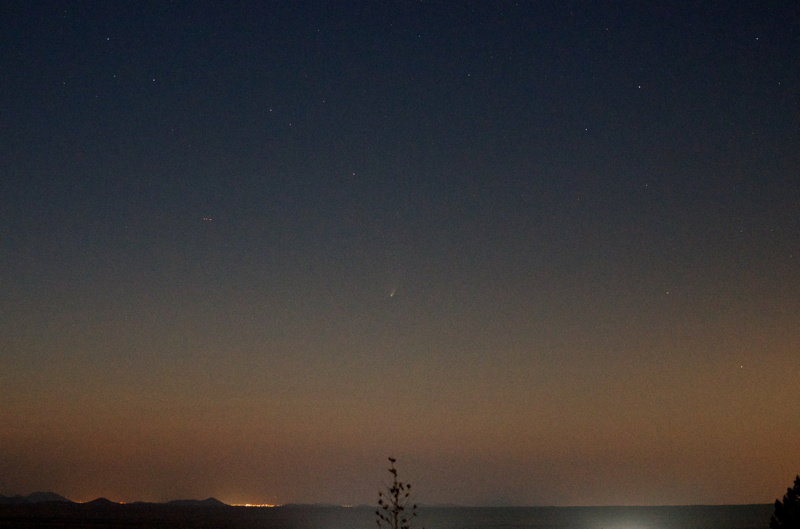
Comet C/2011 L4 (PanSTARRS), Gibbous Moon
Posted: 23 March 2013
Cloudy skies appeared on Sunday, 17 March, and continued until late afternoon on Friday, 22 March 2013. As I could do no observing during that time I added something to the observatory web site. The main (Reports) page now shows the status of the observatory: Open or Closed. Currently, the status is shown below the navigation buttons on the main page, but I may eventually change that position. Subpages (Photos, Videos, etc.) show the observatory status at the top right, as does this report page and future report pages. Now you can check if the observatory is open, and if not, you can always check the weather at the observatory using my Live Webcam, which includes data from my weather station.
With the sky finally clearer on Friday, 22 March, the observatory was opened at 1807 MST, 78°F. The sky was partly cloudy, but mostly clear in the west. There was a very strong breeze blowing. My plan for the night was to photograph Comet C/2011 L4 (PanSTARRS), if I saw it, and the newly discovered supernova (SN 2013am) in the M65 galaxy.
Just after opening the observatory, saw this bird nearby:

At 1830 MST, I left the observatory to set up the D7000 DSLR on a tripod for photographing the comet. Captured this sequence of the setting sun:




The sun set at 1840 MST. After searching the western sky at the azimuth and altitude shown by SkySafari Pro on my iPhone, I finally picked up the comet in 7x50 binoculars at 1928 MST. It was very faint, but with a short tail still visible. I began photographing the comet with the D7000 DSLR at 300mm using various ISO settings, mostly at a shutter speed of 2 seconds. This image (full-frame) was captured at 1938 MST, f/5.6, 2 seconds, ISO 3200, 300mm:

This image was taken at 1940 MST, f/4.5, 2 seconds, ISO 6400, 70mm, showing the comet, some stars, and an airplane in the western sky:

I never did see the comet with the naked eye.
By the time I ended comet photography, clouds had increased and covered much of the sky, dashing my hopes of imaging the supernova in M65. I did manage to get this (highly cropped) image of the waxing gibbous moon, f/5.6, 1/400sec, ISO 100, 300mm:

I returned to the observatory and checked the IR satellite image on my iPhone. The clouds that were in my sky were not shown in the satellite image. And even though the forecast was for clear skies, the sky was obviously not clear, nor were the prospects looking good. I decided to postpone imaging of the supernova until the next night, although the moon will be closer to the galaxy then.
Closed the observatory at 2011 MST, 57°F.
Comments are welcome; use the Comments section below, or you can Email Me. Thanks.
Go to the previous report.
Return to the Cassiopeia Observatory Home Page.